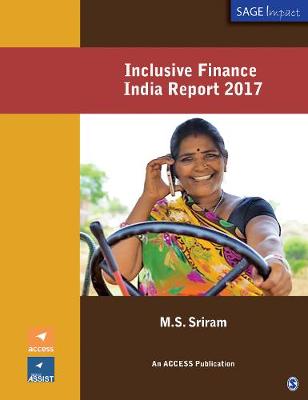SAGE Impact
3 total works
Inclusive Finance India Report 2016 provides in-depth, well-researched, and well-analyzed evidence on how the financial inclusion agenda has progressed at various levels.
The report covers a review of the performance of diverse institutional initiatives working in inclusive finance—banks, specialized banks, self-help groups, and microfinance institutions. It also covers the initiatives in technology that address last-mile delivery as well as provides an overview of new initiatives.
The report focuses on a larger landscape of financial inclusion while continuing to report progress on microfinance in mainstream financial inclusion activity. It tracks the growth of financial inclusion across institutional structures and delivery models, provides a better understanding of the complexities of the sector, and contributes and informs the policy development process on inclusive finance. It also informs banks and investors, both national and international; highlights key issues that require the attention of the financial sector and policymakers; highlights the positive impact of the sector; and identifies policy and practice gaps on an annual basis. The report involves participation by the RBI, Ministry of Finance, banks, apex financial institutions, technology service providers, business correspondents, and diverse delivery models.
This is the best reference book on the annual trends and progress of the financial inclusion and microfinance sector. It includes data-based analysis of all streams of financial inclusion with the most current information in terms of numbers and developments and is a must read for every practitioner in the financial inclusion value chain.
Inclusive Finance India Report 2017 provides in-depth, well-researched and well-analysed evidence on how the financial inclusion agenda has progressed at various levels.
The report covers a review of the performance of diverse institutional initiatives working in inclusive finance—banks, specialised banks, self-help groups and microfinance institutions. It also covers the initiatives in technology that address last-mile delivery as well as provides an overview of new initiatives.
This report focuses on a larger landscape of financial inclusion while continuing to report progress on microfinance in mainstream financial inclusion activity. It tracks the growth of financial inclusion across institutional structures and delivery models, provides a better understanding of the complexities of the sector, and contributes to the policy development process on inclusive finance. It informs banks and investors—both national and international, brings forth key issues that require the attention of the financial sector as well as of policy makers, highlights the positive impact of the sector, and identifies policy and practice gaps on an annual basis. The report involves participation by the RBI, Ministry of Finance, banks, apex financial institutions, technology service providers, business correspondents and diverse delivery models. It serves the dual purpose of informing the policy formulation process as well as providing perspective on the practice of financial inclusion in India.
This is the best reference book on the annual trends and progress of the financial inclusion and microfinance sector. It includes data-based analysis of all streams of financial inclusion, with most current information in terms of numbers and developments. It is a must-read for every practitioner in the financial inclusion value chain.
With the Government of India and Reserve Bank of India taking several bold initiatives for financial inclusion in the country, it is important to analyze the factors that advance or impede India's progress. Inclusive Finance India Report 2015 reviews and traces the advancement of financial inclusion in India. Moreover, the report brings together varying perspectives, policy prescriptions and practices around financial inclusion, along with a critical appraisal of the emerging financial inclusion architecture in India. This involves customer-facing and back-end technology solutions as well as a range of different stakeholders such as banks, regional rural banks, cooperative banks, the postal network, microfinance institutions, self-help groups and the players solving the last mile problem.
In publication since 2006, this report provides a detailed review of the status of implementation of financial inclusion plans, the progress made by various channels of inclusion and the direction of policy initiatives. This year, its scope has been expanded to include two more significant verticals-the postal network and its contribution to inclusive finance as well as urban cooperative banks.


